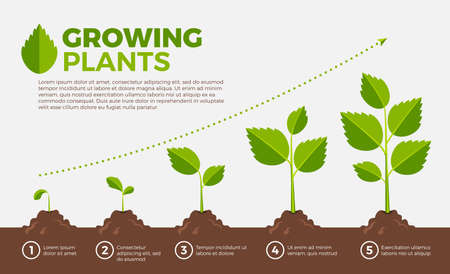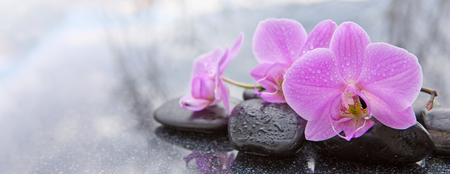Introduction to Herbal Gardening in the UK
Herbal gardening has enjoyed a remarkable resurgence across the UK, reflecting both a respect for traditional remedies and a modern pursuit of wellbeing. British culture boasts a rich history of herbal use, from medieval monastery gardens to classic cottage plots brimming with mint, rosemary, and lavender. In recent years, there has been growing recognition of the health and wellness benefits that home-grown herbs offer—ranging from culinary enhancements to supporting mental calm and immunity. According to the Royal Horticultural Society, over 60% of UK households now engage in some form of home gardening, with a significant portion focusing on herbs for their versatility and therapeutic properties. This trend aligns with a broader shift towards sustainability, self-sufficiency, and a closer connection to nature. Whether cultivated on allotments, balconies, or window sills, seasonal herbal gardening has become a cherished practice for many Britons seeking optimal wellbeing through natural means.
Understanding UK Seasons and Their Impact on Herbs
The UK’s temperate maritime climate creates distinct seasonal variations that directly influence the growth cycles and wellbeing benefits of herbal plants. Understanding these patterns is essential for successful herbal gardening, as temperature, daylight hours, rainfall, and frost risk all play a role in determining when and how specific medicinal herbs can be sown, grown, and harvested for optimal potency.
Seasonal Climate Variations Across the UK
In general, the UK experiences four main seasons—spring (March to May), summer (June to August), autumn (September to November), and winter (December to February). Each season brings its own set of opportunities and challenges for herb gardeners:
| Season | Average Temperature | Daylight Hours | Typical Weather | Main Herb Gardening Activities |
|---|---|---|---|---|
| Spring | 8–15°C | 11–16 hours | Mild, increasing sun, occasional frosts | Sowing seeds indoors/outdoors, transplanting seedlings |
| Summer | 15–25°C | 16–18 hours | Warm, occasional rain, long days | Main growing period; harvesting early herbs |
| Autumn | 8–17°C | 8–14 hours | Cooler, increased rainfall, decreasing sunlight | Final harvests, preparing perennials for winter, sowing hardy varieties |
| Winter | 0–7°C | 7–9 hours | Cold, frequent rain/frost, short days | Protection of tender herbs, planning next season’s garden |
The Effect on Key Medicinal Herbs
The timing and success of popular UK medicinal herbs such as chamomile, peppermint, echinacea, lavender, and rosemary are closely tied to these seasonal conditions. For instance:
- Coriander and parsley: Prefer cooler spring and autumn conditions; tend to bolt in summer heat.
- Basil: Thrives only in summer warmth; sensitive to cold snaps.
- Lemon balm and mint: Hardy perennials; emerge early in spring and remain productive into autumn.
- Echinacea: Requires warm summers for flowering but needs winter dormancy for perennial health.
- Lavender: Suited to sunny positions; tolerates drier soils but struggles with excessive winter wetness.
A Data-Driven Approach to Seasonal Planning
Cultivators aiming for year-round wellbeing benefits should plan their planting schedules around these cycles. By aligning sowing and harvesting with seasonal climate trends—and choosing varieties suited to local microclimates—gardeners can maximise both yield and the medicinal potency of their herbs. Strategic use of protective measures like cloches or cold frames can further extend the growing season for certain species.

3. Best Herbs to Grow Each Season
Optimising your herbal garden throughout the year in the UK is all about choosing the right herbs for each season. Data from the Royal Horticultural Society (RHS) and recent studies on herb hardiness and nutritional value inform these recommendations, ensuring you get maximum health benefits and robust growth.
Spring: Kickstart with Hardy Classics
With gradually warming temperatures and increased daylight, spring is ideal for sowing hardy herbs. Parsley (Petroselinum crispum) and chives (Allium schoenoprasum) thrive in cooler weather. According to RHS data, both show high germination rates above 10°C. Parsley is packed with vitamin C and iron, supporting immune function and energy levels after winter. Chives contain allicin, linked to cardiovascular health.
Coriander (Coriandrum sativum) can also be sown early; it prefers cooler conditions and provides antioxidants such as quercetin, beneficial for allergy relief as pollen counts rise.
Summer: Sun-Loving Superstars
The UK summer, while milder than continental Europe, offers enough warmth for Mediterranean herbs. Basil (Ocimum basilicum) flourishes above 15°C and is rich in eugenol, noted for its anti-inflammatory properties. Rosemary (Rosmarinus officinalis) and thyme (Thymus vulgaris) both thrive in full sun and well-drained soil. Scientific studies highlight rosemary’s role in cognitive support and thyme’s potent antibacterial compounds.
If space allows, try mint (Mentha spicata). Its menthol content aids digestion—ideal for summer barbecues or refreshing teas.
Autumn: Robust Roots and Resilient Greens
Milder autumn temperatures allow continued harvest of perennial herbs while introducing tougher species. Sage (Salvia officinalis) excels now, providing rosmarinic acid that supports throat health during cold season onset. Lemon balm (Melissa officinalis) thrives in cooler months and contains compounds shown to reduce anxiety.
This is also an excellent time to plant winter-hardy parsley varieties, ensuring fresh greens through early frosts.
Winter: Indoor Growing & Hardy Survivors
The British winter presents challenges but does not preclude herb gardening. Indoors, windowsill pots of basil, chives, or parsley can provide fresh greens (with optimal LED grow lights at 12-16 hours/day). Outdoors, thyme, sage, and certain mints withstand mild frosts—data shows established plants survive down to -5°C when mulched properly.
A study from the University of Reading found that regular consumption of sage tea may support cognitive resilience during darker months—a practical wellbeing boost from your winter garden.
Summary Table: Optimal Herb Choices by Season in the UK
- Spring: Parsley, chives, coriander
- Summer: Basil, rosemary, thyme, mint
- Autumn: Sage, lemon balm, hardy parsley
- Winter: Thyme, sage (outdoors); basil, chives, parsley (indoors)
Sourcing Tips:
Select local UK nurseries or reputable online suppliers for disease-resistant seeds adapted to British climates for best results.
4. Local Cultivation Techniques for Optimal Growth
Successful seasonal herbal gardening in the UK hinges on practical, locally-adapted methods that maximise plant health and yield. Here are essential techniques tailored to British gardens and weather conditions.
Soil Preparation: Laying a Robust Foundation
The UKs variable rainfall and often clay-heavy soils make soil preparation a priority. Begin by testing your soil’s pH; most culinary herbs such as rosemary, thyme, and sage prefer slightly alkaline to neutral soils (pH 6.5–7.5). Incorporate well-rotted compost or leaf mould to enhance drainage and fertility, especially in heavy soils typical of many UK regions. For sandy soils, add organic matter to retain moisture. Mulching in spring and autumn helps moderate temperature swings and reduces weed competition.
Soil Types and Herbal Suitability Table
| Soil Type | Common UK Regions | Ideal Herbs |
|---|---|---|
| Clay | Midlands, North West | Mint, parsley, chives |
| Sandy | East Anglia, South East | Lavender, thyme, oregano |
| Loam | South West, Wales | Coriander, basil, dill |
Container Gardening: Flexibility for Urban and Small Spaces
With many UK homes lacking large gardens, container gardening offers flexibility. Use pots with drainage holes and fill with a peat-free multipurpose compost mixed with grit for improved drainage. Group containers together to create microclimates—herbs like basil benefit from warmth generated by clustering. Place containers in sunny spots; most herbs need at least 6 hours of sunlight per day even in the British summer.
Key Container Gardening Tips
- Avoid waterlogged roots by raising pots on feet or bricks.
- Rotate containers weekly for even light exposure.
- Add slow-release organic fertiliser at planting time.
Sustainable Practices for Long-Term Wellbeing
Adopting sustainable methods not only supports your own wellbeing but also the local ecosystem. Collect rainwater in butts for irrigation; herbs generally prefer rainwater over tap water due to lower chemical content. Companion planting—such as pairing basil with tomatoes or calendula near parsley—naturally deters pests and attracts pollinators common in UK gardens like bees and hoverflies.
Sustainable Practice Checklist
- Use organic mulches to conserve moisture and suppress weeds.
- Avoid synthetic pesticides; opt for natural remedies like garlic spray.
- Compost garden waste to enrich next season’s soil.
- Rotate herb positions annually to prevent soil-borne diseases.
By following these practical cultivation techniques—tailored for the UK’s unique climate and urban environments—you’ll ensure strong, resilient herbs that contribute positively to your seasonal wellbeing throughout the year.
5. Harvesting and Preserving Herbs for Wellbeing
Harvesting your herbs at the right time is crucial for ensuring their optimal flavour, potency, and wellbeing benefits. In the UK, where seasonal changes can be pronounced, timing and technique are particularly important. Below are evidence-based guidelines to help you maximise the value of your homegrown herbal harvests throughout the year.
When to Harvest: Timing for Maximum Potency
The best time to harvest most herbs is just before they flower, when essential oil content is at its peak. For annuals like basil and coriander, this usually means late spring through mid-summer. Perennial herbs such as rosemary, thyme, and sage can be harvested from late spring into early autumn. Always pick herbs in the morning after dew has evaporated but before midday sun reduces their volatile compounds.
Seasonal Guide to Common UK Herbs
- Spring: Chives, mint, parsley—harvest tender new growth for vibrant flavour.
- Summer: Basil, coriander, dill—pick regularly to encourage bushy growth and delay flowering.
- Autumn: Sage, rosemary, thyme—trim established stems; these are more robust after a summer of growth.
- Winter: Bay and evergreen varieties—snip sparingly during mild spells to avoid stressing the plant.
How to Harvest: Techniques that Protect and Prolong
Use sharp scissors or secateurs to avoid bruising leaves and stems. For leafy herbs, cut above a leaf node to encourage regrowth. Never remove more than one-third of the plant at once; this helps maintain its vitality throughout the season. For woody perennials like lavender or rosemary, trim only soft new growth rather than old wood.
Preservation Methods Suited to UK Conditions
- Drying: Air-dry small bunches of hardy herbs such as thyme or sage in a well-ventilated room away from direct sunlight. For softer herbs (e.g., mint or basil), use a dehydrator set at low heat to prevent mould in damp weather.
- Freezing: Chop herbs like parsley or coriander and freeze them in ice cube trays with a little water or oil for easy use in winter stews and teas.
- Infusing: Create herb-infused oils or vinegars by steeping fresh sprigs in oil/vinegar for several weeks; store in sterilised bottles in a cool, dark place.
Practical Tips for UK Gardeners
The UKs changeable climate can impact drying times and storage stability. Always ensure herbs are completely dry before storing in airtight jars to prevent spoilage. Label containers with harvest dates for best quality assurance. By following these seasonal harvesting and preservation guidelines, you’ll ensure your herbal remedies retain maximum wellbeing benefits all year round.
6. Integrating Homegrown Herbs into Everyday British Life
Freshly harvested herbs from your own garden offer a unique opportunity to infuse traditional British living with enhanced flavour and wellbeing. The UK’s rich culinary heritage and evolving wellness trends make homegrown herbs an accessible luxury, whether you’re preparing a classic Sunday roast or seeking natural remedies for daily self-care.
Culinary Uses: Elevating British Classics
Homegrown herbs such as rosemary, thyme, mint, and parsley can transform the most familiar dishes. Add finely chopped rosemary and thyme to roast lamb or potatoes for a robust, aromatic twist—a nod to the quintessential British Sunday lunch. Fresh mint is ideal for homemade mint sauce or muddled into Pimm’s during summer gatherings. Parsley and chives can brighten up fish pie, scrambled eggs, or new potatoes, while sage lends depth to traditional stuffing and sausages.
Infusions and Beverages
Herbal teas are deeply rooted in UK culture. Infuse freshly picked chamomile or lemon balm for a calming evening brew, or add sprigs of mint to hot water for a refreshing after-dinner drink. Experiment with herb-infused cordials—elderflower and lemon verbena are particularly popular in British gardens—for homemade soft drinks or cocktail mixers.
Wellness Rituals: Supporting Mind and Body
The therapeutic properties of many UK-friendly herbs align well with modern wellbeing practices. Lavender sachets under pillows promote restful sleep, while calendula salves can soothe skin irritations naturally. A steam inhalation with thyme or sage may help clear sinuses during cold season, supporting traditional folk remedies with contemporary science. For bath rituals, tie bundles of rosemary or lavender under running water for an uplifting soak.
Self-Care & Household Uses
Beyond culinary and wellness applications, integrate your herbs into everyday routines: use bay leaves in homemade cleaning products for natural fragrance, or dry sprigs of oregano and mint for potpourri. Displaying fresh bunches in the kitchen not only brightens the space but also encourages spontaneous use in recipes.
Maximising Freshness and Benefits
To ensure optimal potency, harvest herbs just before use—ideally in the morning after dew evaporates but before heat diminishes essential oils. Preserve any surplus by freezing in ice cube trays with water or olive oil, or drying them slowly in a cool, dark place for winter use. By weaving homegrown herbs into daily British life—from kitchen to self-care—you foster greater wellbeing while honouring both tradition and innovation.
7. Resources and Community Initiatives
Engaging with local resources and community initiatives can significantly enhance your seasonal herbal gardening journey in the UK. Whether you are a beginner or an experienced gardener, accessing the right networks and opportunities will help you gain practical skills, exchange knowledge, and support your wellbeing goals.
Local Gardening Networks
Across the UK, regional gardening societies and herbal interest groups provide platforms for sharing advice tailored to British climate conditions. Organisations such as the Royal Horticultural Society (RHS) and Garden Organic offer memberships with access to exclusive events, forums, and local meetups. Participating in these communities enables gardeners to stay informed about best practices for seasonal planting and maintenance specific to herbs.
Workshops and Training
Many botanic gardens, adult education centres, and community projects run workshops on herbal gardening throughout the year. These hands-on sessions cover topics from seed sowing and propagation to sustainable harvesting and herbal remedy preparation. Institutions like Kew Gardens in London and the Eden Project in Cornwall frequently host educational events that cater to all skill levels.
Seed Swaps
Seed swaps are a popular grassroots initiative across the UK that encourage biodiversity and resilience in local gardens. These informal gatherings—often organised by allotment associations or community centres—allow gardeners to exchange surplus seeds, including heritage and medicinal herb varieties well suited to the British climate. Participating not only diversifies your herb garden but also fosters a sense of collaboration within your neighbourhood.
Further Reading
For continual learning, several UK-specific books and online resources provide evidence-based guidance on seasonal herbal gardening. Recommended titles include “The New Herbal Handbook” by David Hoffmann and “Herb Gardening in Britain” by Deni Bown. Additionally, websites such as the RHS Plant Finder and Garden Organic’s Herb Directory offer up-to-date information on cultivation techniques, plant profiles, and ecological considerations relevant to the UK.
Conclusion: Connecting for Optimal Wellbeing
By tapping into these networks, workshops, seed swaps, and curated reading materials, you can deepen your expertise and enjoyment of seasonal herbal gardening in the UK. These resources not only enhance your horticultural success but also promote personal wellbeing through connection, learning, and sustainable practice.


